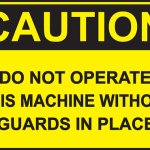Imagine being in the airport of a foreign country for the first time. How do you get from the entrance to the boarding area? The clock’s ticking.
You arrive at your hotel, but instead of going straight to your room, you’d like to grab a quick bite or even check out the souvenir shop. Do you know how to get to each of your intended destinations?
A loved one is confined in a hospital. You know the assigned room number. But how do you get there from the lobby?
Table of Contents
Purposeful design
In each of these situations, you can say that you simply ask for directions. True, but in some types of interior environments which are complex, merely having someone outline the directions for you can be confusing.
This is where a wayfinding system can prove to be invaluable.
According to The Society for Experiential Graphic Design, a non-profit professional organization, wayfinding “refers to information systems that guide people through a physical environment and enhance their understanding and experience of the space.”
In interior and exterior environments that have become more and more complex, wayfinding can provide visitors not only with a sense of direction. More importantly, wayfinding systems can serve as a critical foundation that gives people a sense of safety and wellbeing.
Making an environment navigable
It doesn’t matter where a wayfinding system is used – a hotel, an airport, a campus, or a mall. The goal is essentially the same – making that specific environment navigable.
What makes a place navigable? What does navigability mean?
To put it succinctly, navigability means being able to get from a starting point to an intended destination, even if you have no clear idea where that destination is.
A location is considered navigable if it satisfies three criteria:
- First, the person should be able to identify his current position.
- Second, that person can find a route that leads him to his destination. This entails making the right decisions that will move him closer to the destination.
- Finally, the person should be able to acquire wayfinding experience as moves from point A to point B. This means that the person can form a map in his mind, which will make it easier for him to navigate a location at another time.
Key principles of wayfinding
Wayfinding is not just about putting up signages in a location. It goes beyond that. Wayfinding consultants follow a few essential principles to make a place navigable, even for first-time visitors.
Locations in a larger space should be easily distinguished
To a new visitor, a large place becomes easily navigable if the smaller areas can be easily distinguished from each other. And on the other end of the spectrum, the visitor can quickly identify these smaller areas simply by looking at their similarities.
One of the best ways to subdivide a large environment is to imbue smaller areas with unique visual characters. Such allows a person to identify each area from one another easily.
There are several approaches to creating a visual character for an area, including setting defined boundaries, the use of colors, or determining that area’s essential function. But no matter what approach is used, wayfinding experts will clearly define an area against another.
The individual areas created can then be used to help a visitor navigate the location by guiding him through the use of transition in the character of each smaller space.
One of the best ways to subdivide a large environment is to imbue smaller areas with unique visual characters. Such allows a person to identify each area from one another easily.
There are several approaches to creating a visual character for an area, including setting defined boundaries, the use of colors, or defining that area’s vital function. But no matter what approach is used, wayfinding experts will clearly define an area against another.
The individual areas created can then be used to help a visitor navigate the location by guiding him through the use of transition in the character of each smaller space.
Use landmarks strategically
In wayfinding design, landmarks have a dual purpose. First, landmarks help orient a visitor in relation to his current location in a given area of a place. For this purpose, the landmark should be large enough to be visible that it can be seen even when surrounded by other structures or people.
Another critical function of landmarks is to make a specific area in a location memorable. Ideally, people should associate their decisions in relation to a landmark.
However, experts in wayfinding are cautious in their use of landmarks. The use of too many landmarks undermines the goal of making an area memorable and distinct. Instead of using several landmarks, the use of fewer landmarks is preferred as this allows a visitor to remember an area better.
Establish clear paths
What makes a path clear and well-structured? First, it should have an identifiable start, middle, and end at any given orientation. In short, a visitor should know exactly where he is on the path as well as correctly determine how far he is from the beginning and the end of a route.
Information overload should be avoided
For hospitals and similar facilities, having clear-cut routes is highly recommended. But for commercial establishments, hotels, and similar places, there is more leeway for visitors to explore different areas.
However, wayfinding experts take particular care in giving people options in terms of navigation. If visitors are encouraged to explore, the primary route should be easy to find when he wants to go back to finding his original destination.
AUTHOR BIO
Zak Zakaria is a Waymaker at dezigntechnic in Dubai who also previously worked as the company’s Graphic Designer and Art Director. Zak is a creative with work experience in multiple multinational agencies such as JWT and Saatchi & Saatchi. Signage design is a family business, making Zak’s personal experience with signage his longest professional commitment.

















